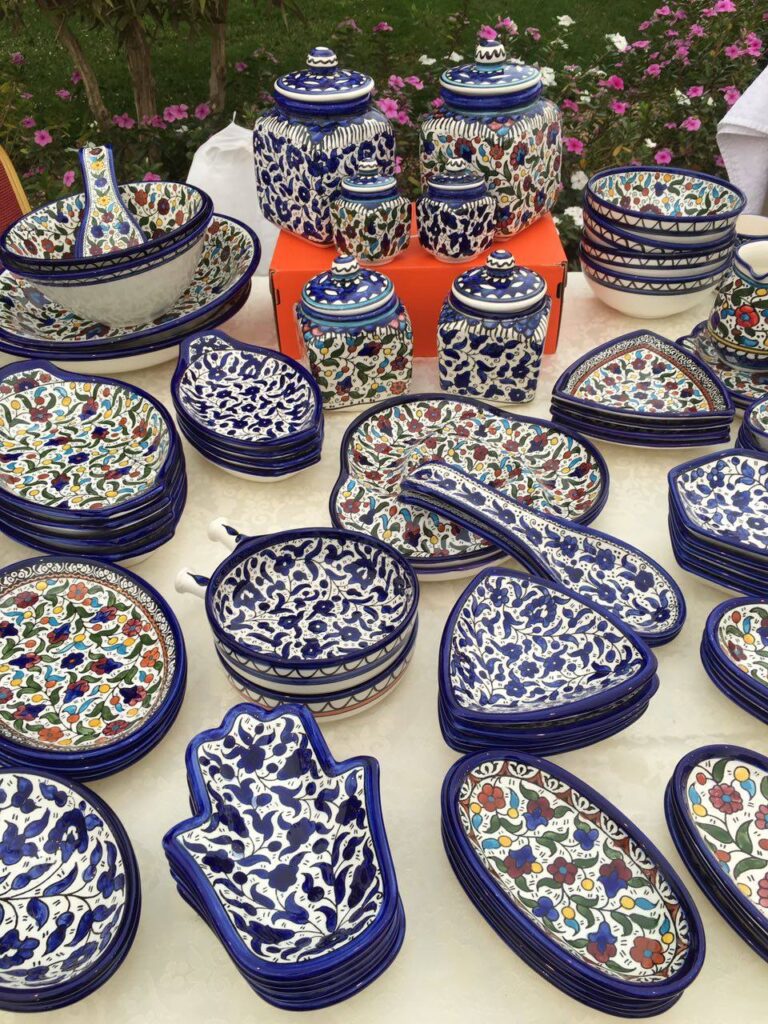
The history of ceramics in Palestine dates to the 16th Century when Sultan Suleiman commissioned a restoration of the Dome of Rock with handmade tiles painted by Armenian potters. In the centuries that followed there were several periods of restoration during which Armenian potters were employed and brought to Jerusalem.
Hebron, a city with roots dating back thousands of years, is at the centre of Palestinian ceramics production. The craft has been passed down through generations, with each piece echoing the cultural heritage of Palestine. Hebron ceramics feature intricate geometric patterns and floral motifs that tell stories of perseverance and artistry.
Why Blue and White?
The iconic blue and white colour palette of Palestinian ceramics is not arbitrary; it reflects the influence of Islamic art and the region’s history. These colours are deeply ingrained in Palestinian culture and resonate with the aesthetics of the Mediterranean. The intricate blue designs on white backgrounds are not just visually stunning but also symbolise purity and tranquility.
The influence of Plaestinian Ceramics in Al Andalus
The influence of Palestinian ceramics on Al-Andalus is an interesting aspect of cultural exchange between the two regions. Palestinian ceramics, known for their intricate designs and vibrant colors, had a significant impact on the development of ceramic art in Al-Andalus. During the Islamic rule in Al-Andalus, there was a strong demand for luxury goods, including ceramics, which led to the importation of various ceramic styles from different regions, including Palestine. Palestinian ceramics, with their unique designs and craftsmanship, caught the attention of the ruling elite in Al-Andalus and became highly sought after
The influence of Palestinian ceramics can be seen in the use of decorative techniques and motifs in Al-Andalus ceramics.
The vibrant colors, geometric patterns, and floral designs that are characteristic of Palestinian ceramics were incorporated into the ceramic production of Al-Andalus. This fusion of styles resulted in a distinctive Andalusian ceramic tradition that combined elements from various cultural influences, including Palestine.
The exchange of ceramic techniques and designs between Palestine and Al-Andalus also contributed to the development of new artistic styles.
The influence of Palestinian ceramics can be seen in the use of lusterware, a technique that creates a metallic sheen on the surface of ceramics, which was widely used in Al-Andalus ceramics. Overall, the influence of Palestinian ceramics on Al-Andalus was significant in shaping the artistic and decorative traditions of the region. The incorporation of Palestinian ceramic techniques and designs added a unique and vibrant element to the ceramic production in Al-Andalus, contributing to the rich cultural heritage of the region.
